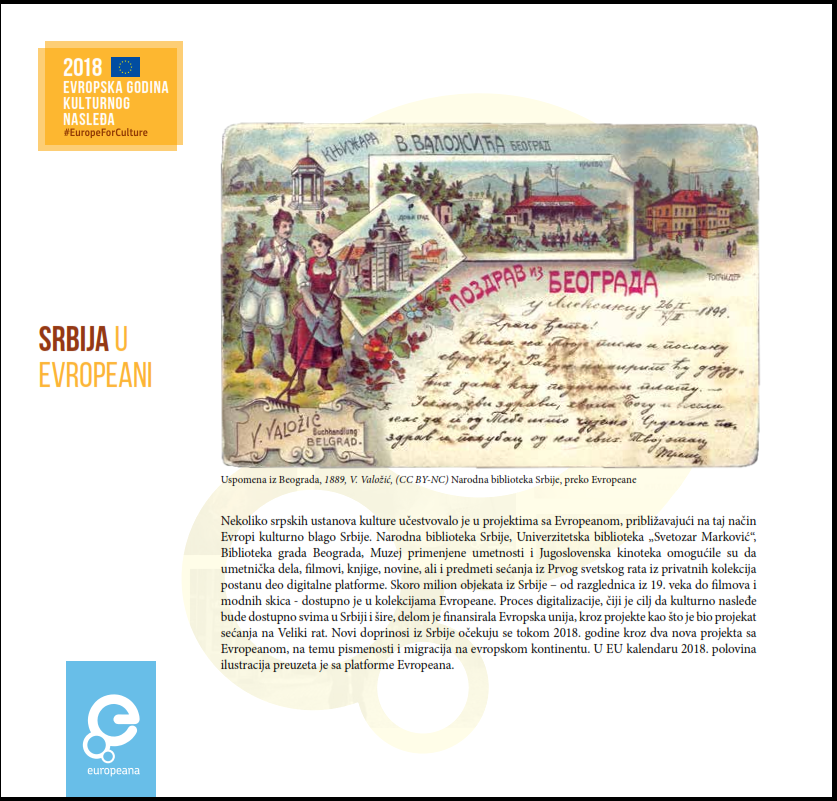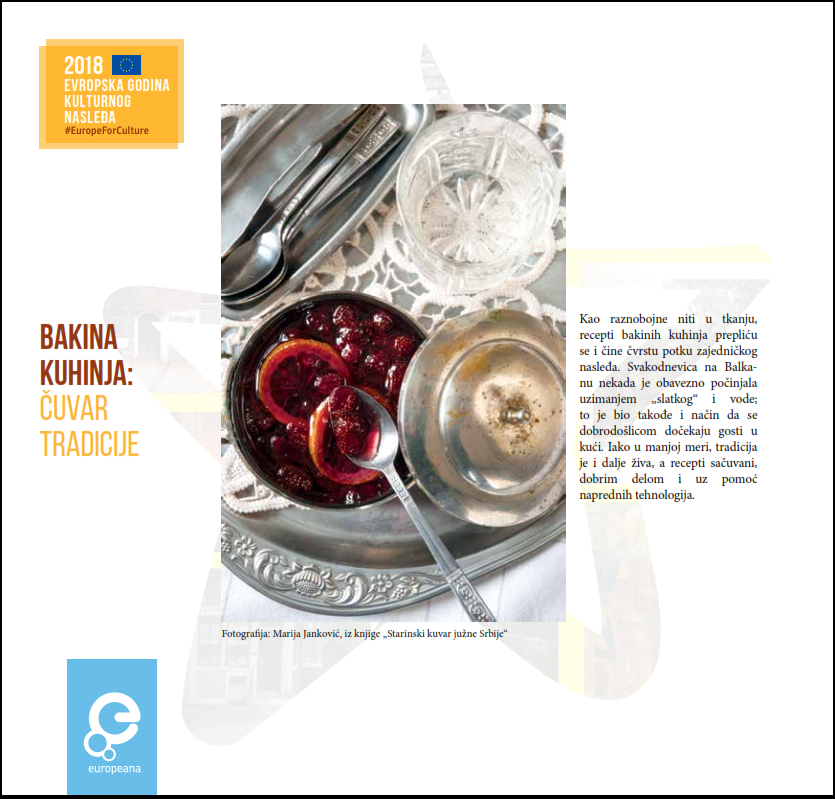Serbian 2018 calendar created in cooperation with Europeana for the European Year of Cultural Heritage
In order to promote the European Year of Cultural Heritage, the EU Info Centre and EU Delegation to Serbia, in cooperation with Europeana, designed a 2018 calendar that features a small portion of the rich cultural heritage of Serbia and Europe, using Europeana Collections as the main source.

- Title:
- Front page of the calendar ‘Where the past meets the future’
- Creator:
- EU Info Centre
- Copyright:
- CC BY-NC
The EU Info Centre in Belgrade spearheaded the initiative to design a calendar reflecting the 2018 European Year of Cultural Heritage and handed it out to partner organisations and Serbian citizens, but also made it available in electronic form.
This was the first in the series of activities to be executed by the EU Info Centre and the EU Delegation to Serbia over the course of the European Year of Cultural Heritage. Apart from being the first, this activity is also unique as it was carried out in collaboration not only with local partners – the National Library of Serbia and Europa Nostra Serbia – but also in close cooperation with Europeana. This way, ‘the project’ encompassed all key actors at both European (the EU and Europeana) and national level.
European and Serbian cultural heritage has been depicted through photos, the bulk of which were borrowed from Europeana, accompanied by short captions that present the richness and diversity of European culture and Serbia’s contribution to it, on the one hand, and to bring Serbian citizens closer to Europeana, on the other.
The authors believe that the diversity and richness of cultural heritage brings people together and builds a shared understanding of places that make up the great European continent: ‘The heritage found in villages and towns, chateaux and chapels, art works and museums, but also in our homes, crafts and cuisine is what gives us a true European identity.’

Page from the calendar ‘Serbia in Europeana’, V. Valožić, “Memory from Belgrade”, 1889, National Library of Serbia, CC BY-NC
The initiators of the project stated that the content selection was an exciting challenge that allowed them to set out on a genuine journey through European culture via Europeana with support from the Europeana Collections team.
As well as pieces from Europeana, the 2018 EU calendar features contributions from Serbia, reflecting not only Serbia’s architectural and archaeological cultural heritage, but also scenes from everyday life and traditions, including street art as part of emerging heritage.

Page from the calendar ‘Grandma’s kitchen: Guardian of tradition’, M. Janković, “Starinski kuvar južne Srbije“ CC BY-NC
